Complete Solutions to Solved Examples of chapter WORK, POWER & ENERGY of Class 11 book with complete answers and questions
| Class 11 | PHYSICS |
| Chapter | WORK, POWER & ENERGY |
| CENGAGE PHYSICS | Solved Examples |
| Number Of Questions | 15 |
| Academic Year | 2023-24 |
Figure. A smooth circular path of radius R on the horizontal plane which is quarter of a circle A block of mass m is taken from position A to B under the action of a constant force F. Calculate the work done by force F.
a. If it is always directed horizontally
b. If the block is pulled by a force F which is always tangential to the surface
c. Block is pulled with a constant force F which is always directed towards the point B06:37View SolutionA string with one end fixed on a rigid wall, passing over a fixed frictionless pulley at a distance of `2m` from the wall, has a point mass M of `2kg` attached to it at a distance of `1m` from the wall. A mass `m` of `0.5kg` is attached to the free end. The system is initially held at rest so that the stirng is horizontal between wall and pulley and vertical beyond the pulley as shown in figure.
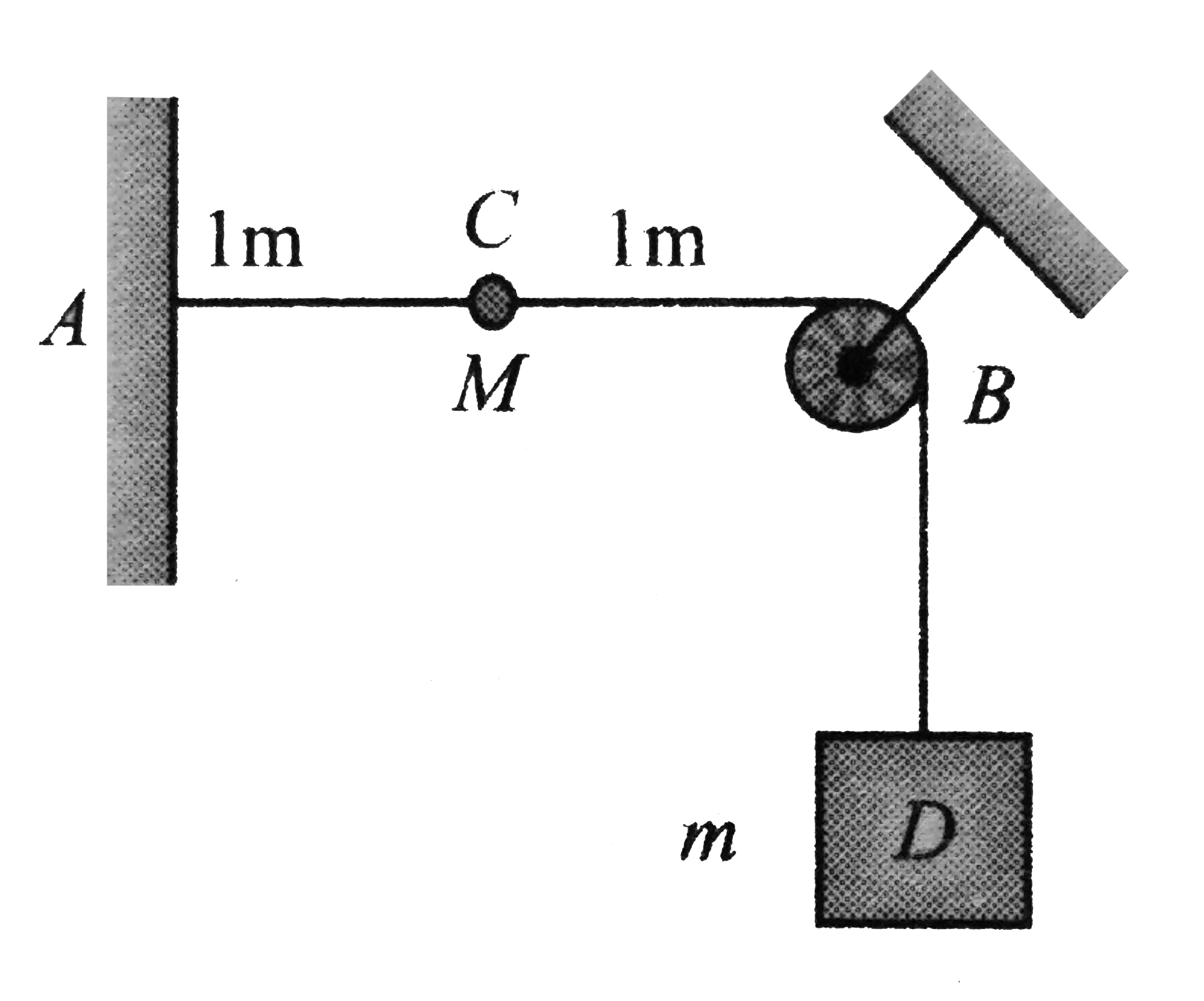
What will be the speed with which point mass M will hit the wall when the system is released? `(g=10ms^-2)`08:45View SolutionA block of mass `m` is slowly pulled along a curved surface from position 1 and 2. If the coefficient of kinetic friction between the block and surface is `mu`, find the work done by the applied force.
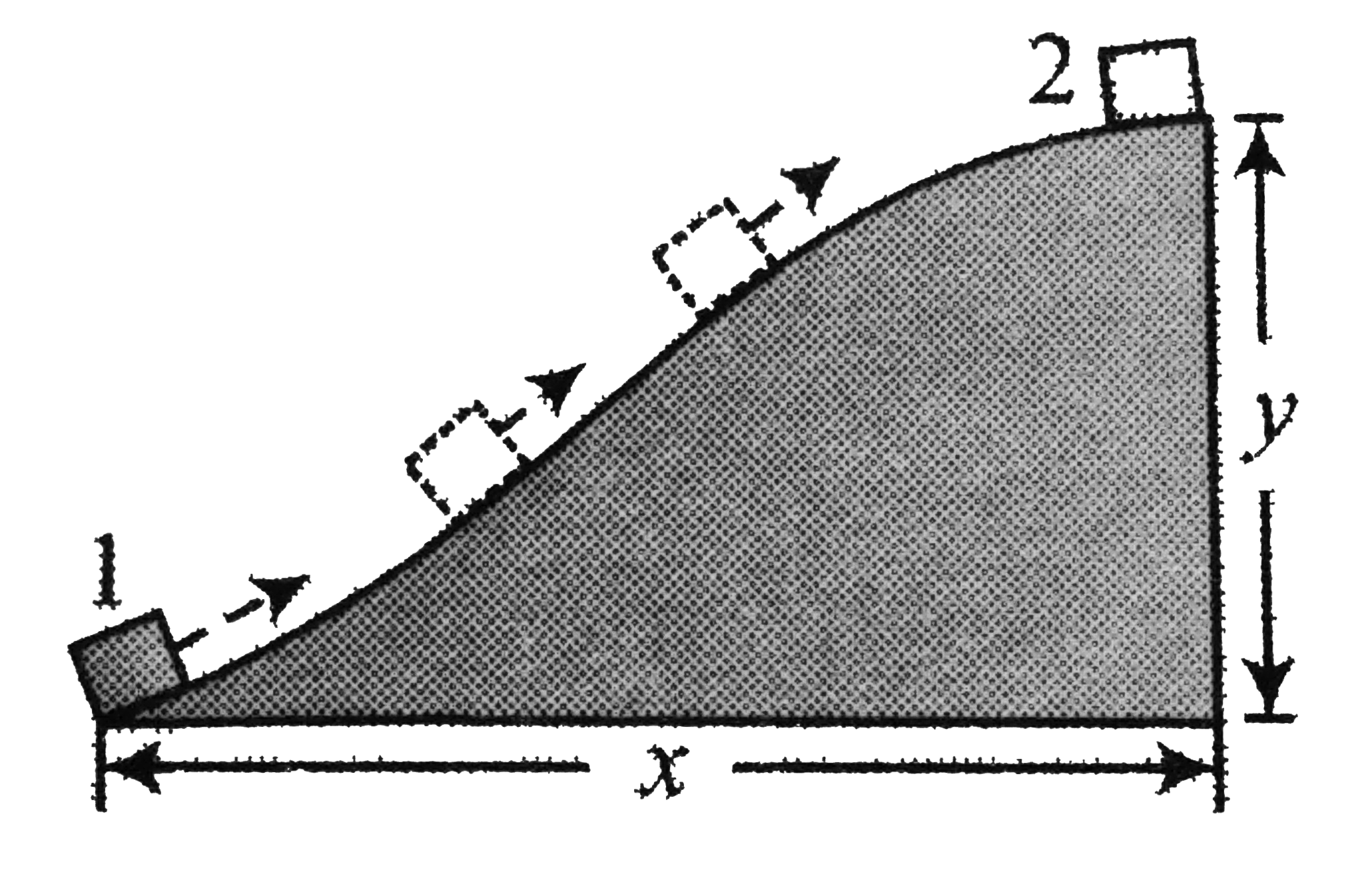 02:01View Solution
02:01View SolutionA vertical rod of mass m is kept on a wedge of mass M. If a horizontal force F acts on the wedge and the rod is constrained to move vertically, after releasing the rod-wedge system, (a) find their speeds when the wedge moves through a distance x. (b) What is the power delivered by the rod on the wedge aftre a time t measured from the instant of release?
 09:34View Solution
09:34View SolutionA uniform chain of mass m and length l is at the verge of sliding under the effect of gravity of the hanging part. Find the
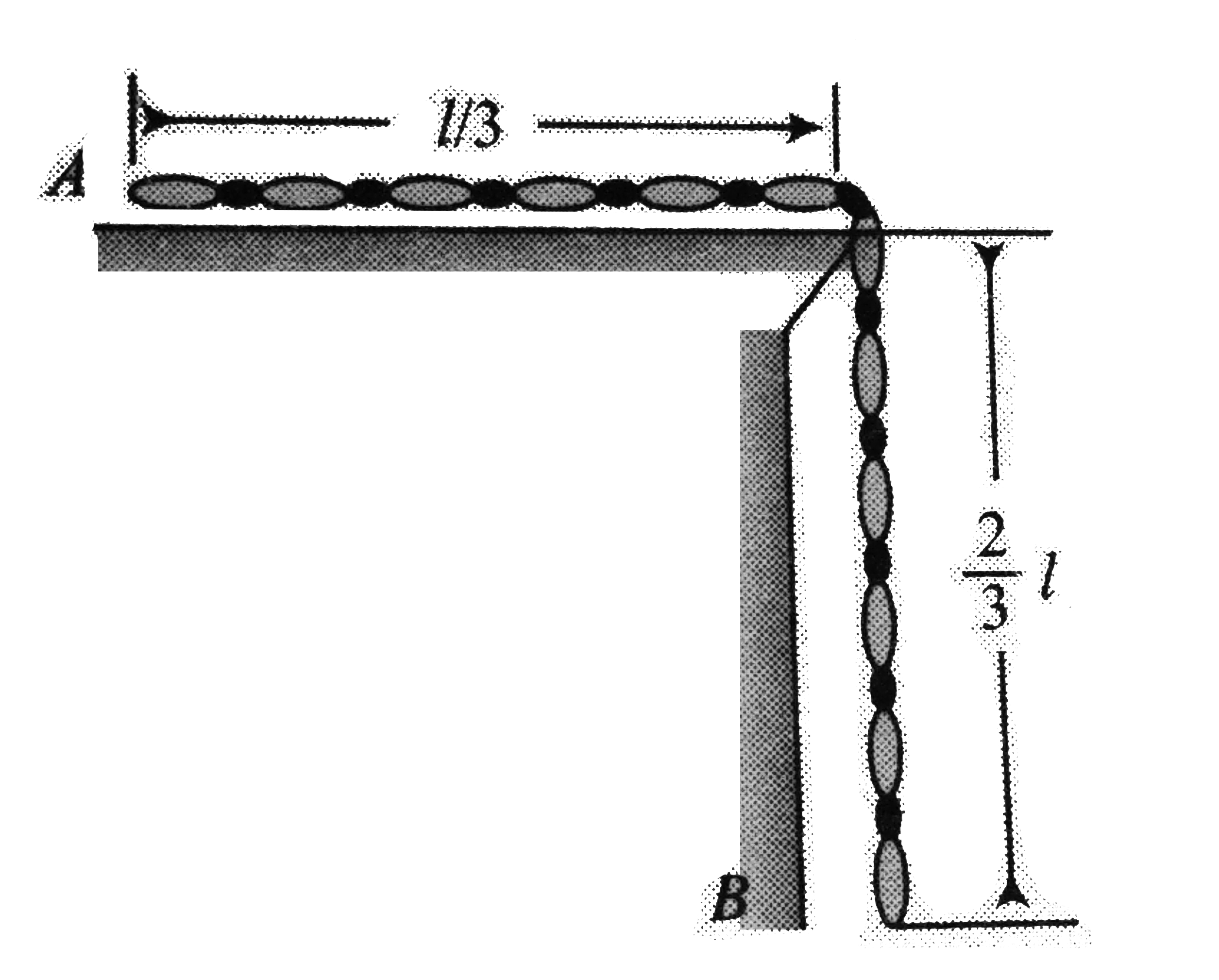
a. coefficient of friction, between chain and table.
b. work done by friction and gravity till the chain leaves the table if the hanging part is pulled gently and released.
c. speed of the chain at the time of leaving the table in part (b) .
d. work done by the external force acting at the end A of the chain in slowly pulling the chain completely onto the table.10:07View SolutionBlock of mass m are released from rest and they slide down the inclined surface as shown in figure. Show that the work done by the frictional forces on the blocks are same in all the cases. Also calculate the speeds with which the blocks reach point B. The coefficient of friction for all the surface is `mu_k`.
 04:46View Solution
04:46View SolutionA horizontal plane supports a plank with a bar of mass `m` placed on it and attached by a light elastic non-deformed cord of length `l_0`, to a point O. The coefficient of friciton between the bar and the plank is equal to `m`. The plank is slowly shifted to the right until the bar starts sliding over it. It occurs at the moment when the cord derivates from the vertical by an angle `theta`.
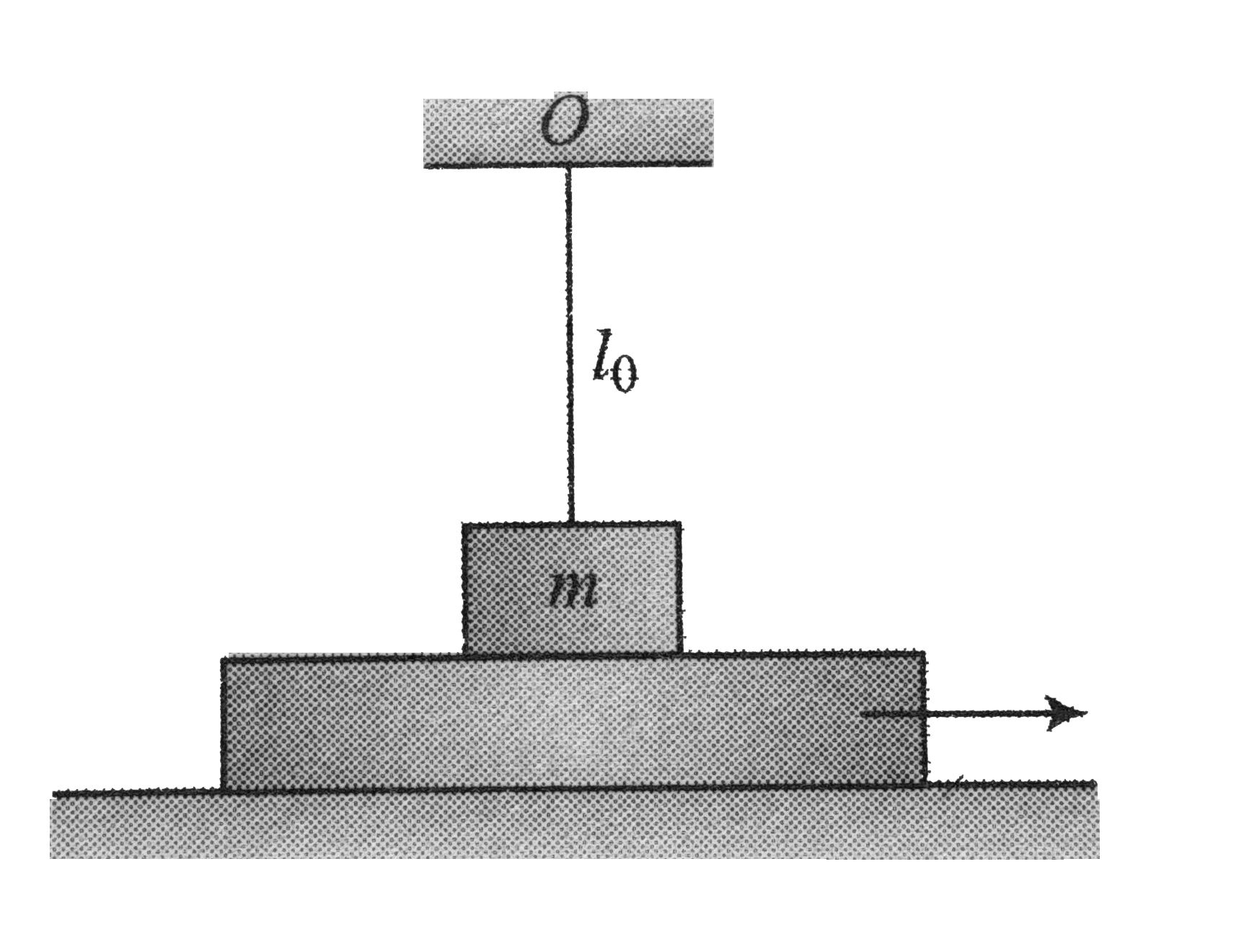
Find the work that has been performed by the moment by the frictional force acting on the bar in the reference frame fixed to the plane.07:23View SolutionTwo identical blocks A and B, each of mass `m=2kg` are connected to the ends of an ideal spring having force constant `K=1000Nm^-1`. System of these blocks and spring is placed on a rough floor. Coefficient of friction between blocks and floor is `m=0.5`. Block B is passed towards left so that spring gets compressed.

Calculate initial minimum compression `x_0` of spring such that block A leaves contact with the wall when system is released.05:44View SolutionA small bar A resting on a smooth horizontal plane is attached by threads to a point P and by means of weightless pulley, to a weight B possessing the same mass as the bar itself. The bar is also attached to a point O by means of a light non-deformed spring of length `l_0=50cm` and stiffness `k=5mg//l_0`, where `m` is the mass of the bar. The thread PA having been burned, the bar starts moving to the right. Find its velocity at the moment when it is breaking off the plane.
 08:03View Solution
08:03View SolutionA block of mass m is connected rigidly with a smooth wedge (plank) by a light spring of stiffness k. If the wedge is moved with constant velocity `v_0`, find the work done by the external agent till the maximum compression of the spring.
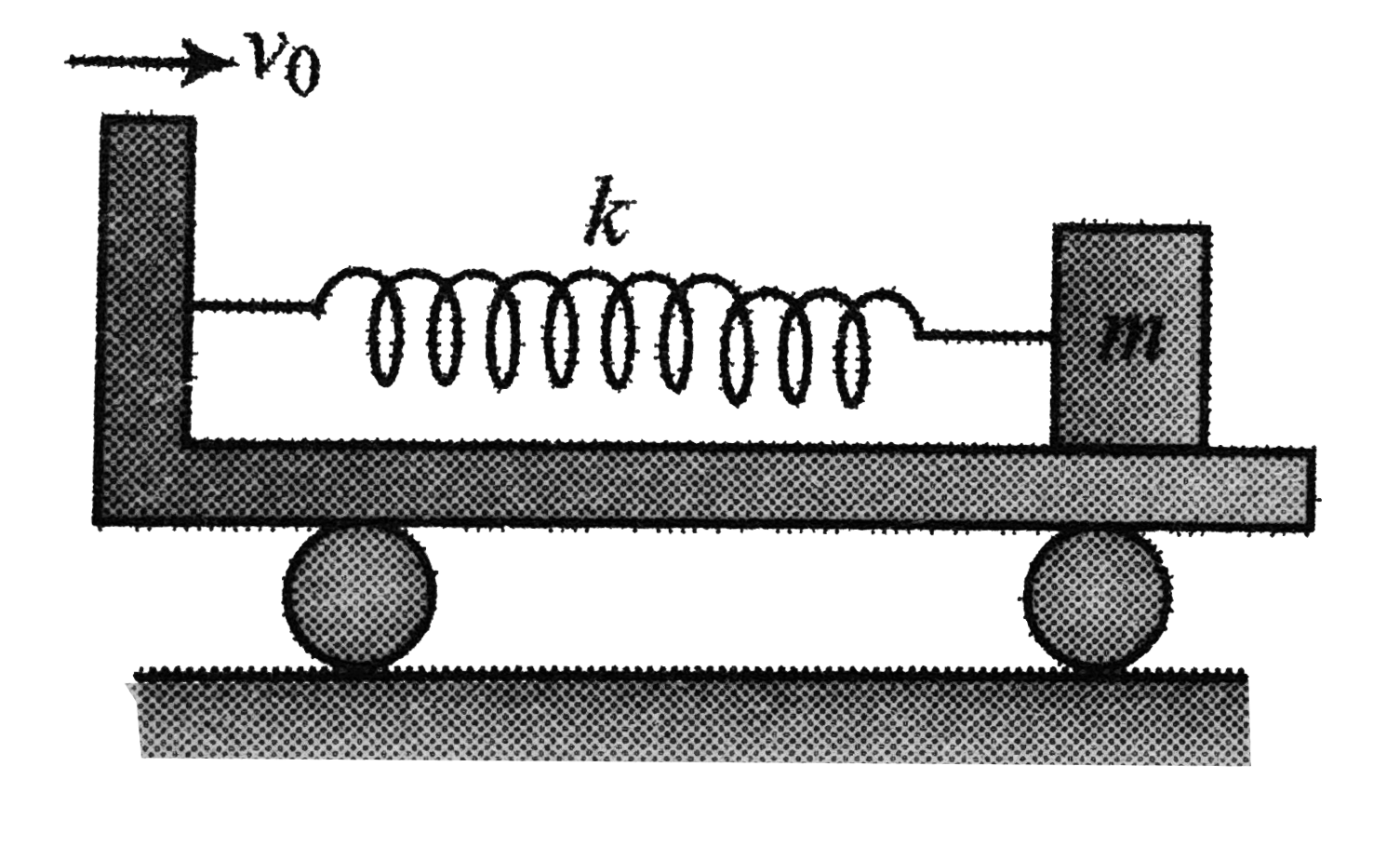 05:49View Solution
05:49View SolutionA block A of mass `m=5kg` is attached with a spring having force constant `K=2000Nm^-1`. The other end of the spring is fixed to a rough plane, inclined at `37^@` with horizontal and having coefficient of friction `m=0.25`. Block A is gently placed on the plane such that the spring has no tension. Then block A is released slowly. Calculate elongation of the spring when equilibrium is achieved. Now an inextensible thread is connected with block A and passes below pulley C and over pulley D, as shown in figure. Other end of the thread is connected with another block B of mass `3kg`. Block B is resting over a table and thread is loose. If the table collapse suddenly and B falls freely through `80//9cm`, the thread becomes taut, calculate combined speed of blocks at that instant, and maximum elongation of spring in the process of motion. `(g=10ms^-2)`.
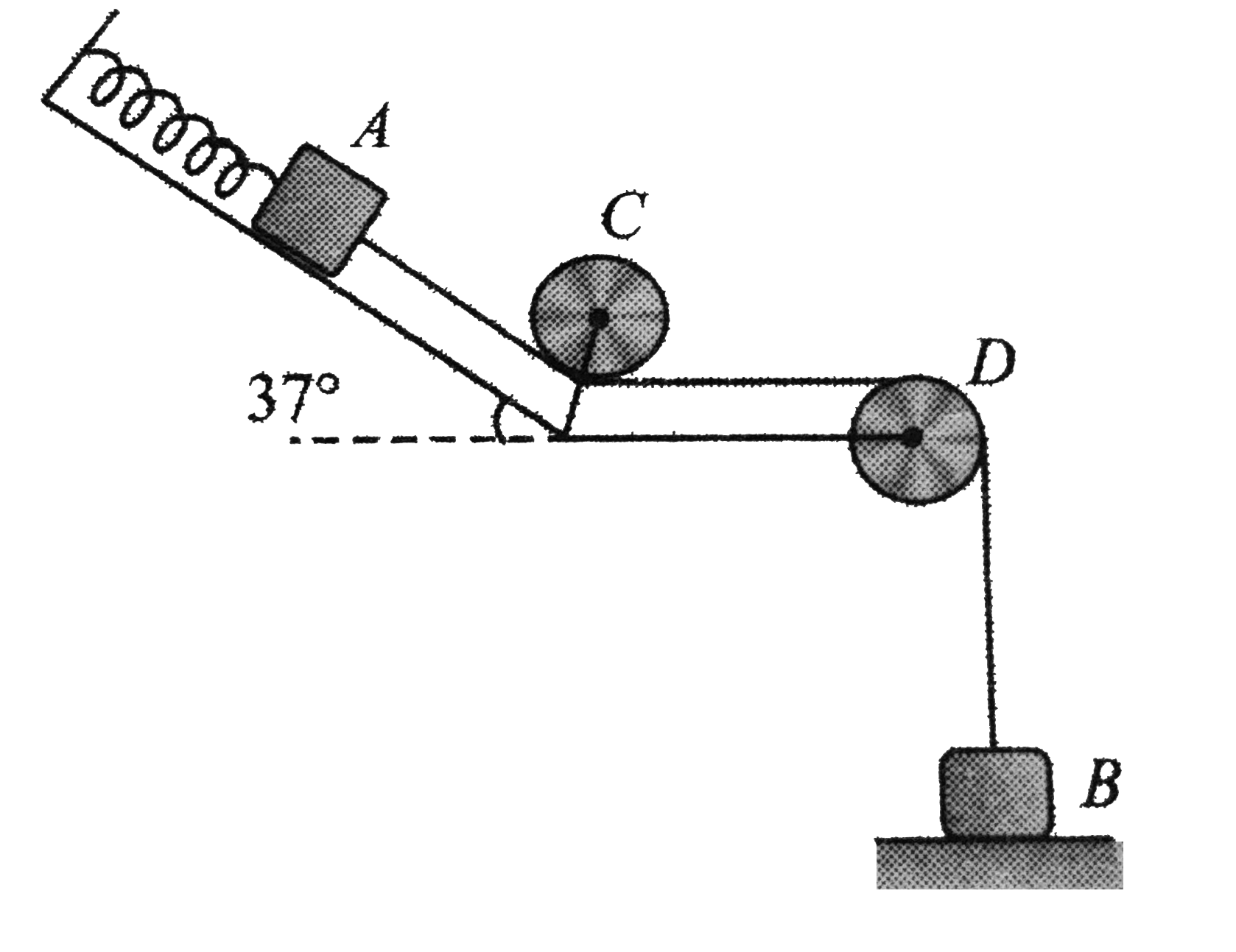 11:30View Solution
11:30View SolutionA particle is suspended vertically from a point O by an inextensible mass less string of length L. A vertical line AB is at a distance of `L/8` from O as shown in figure. The particle is given a horizontal velocity u. At some point, its motion ceases to be circular and eventually the object passes through the line AB. At the instant of crossing AB, its velocity is horizontal. Find u.
 08:39View Solution
08:39View SolutionA loop of mass M with two identical rings of mass m at its top hangs from a ceiling by an inextensible string. If the rings gently pushed horizontally in opposite directions, find the angular distance covered by each ring when the tension in the string vanishes for once during their motion.
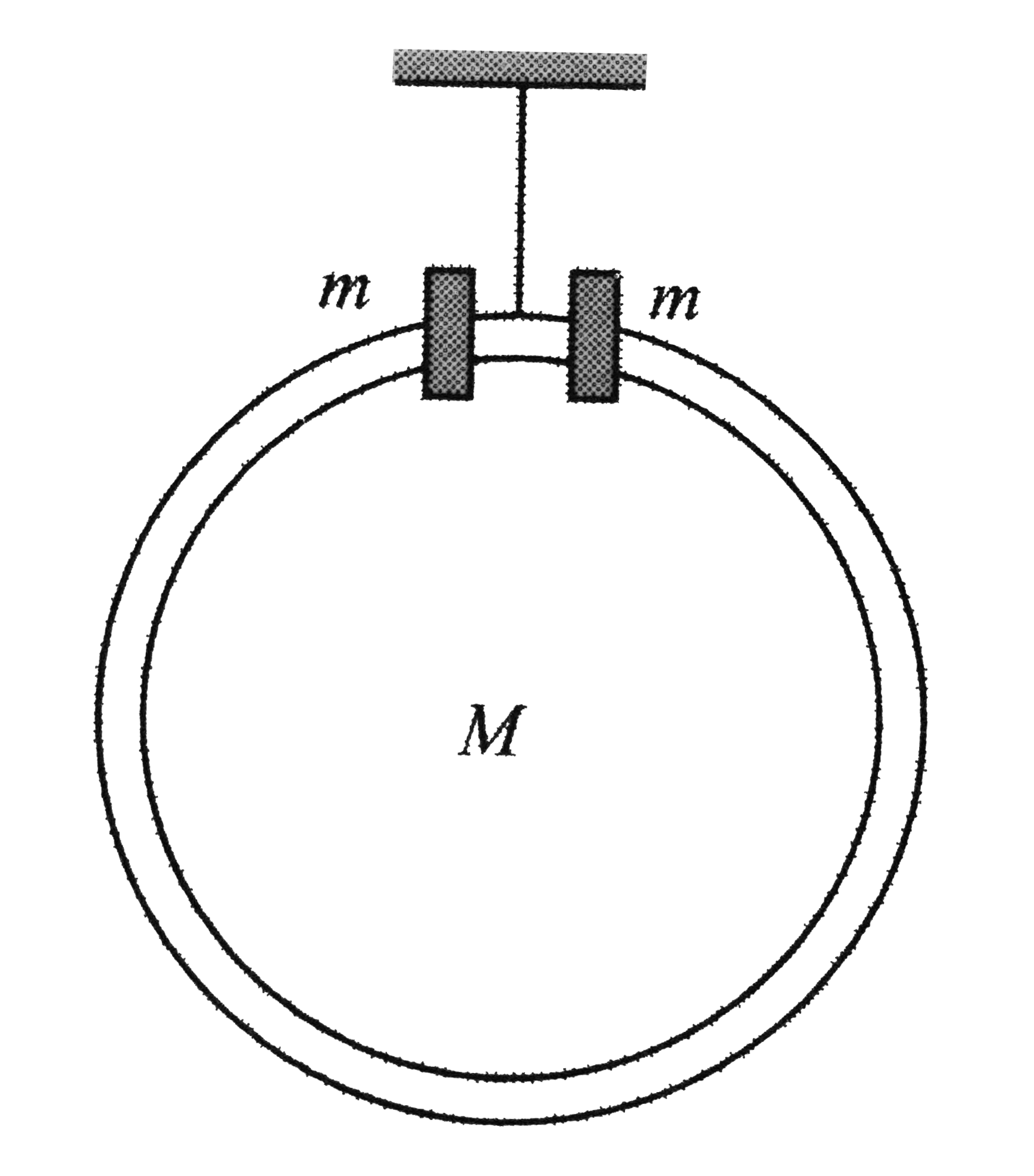 07:39View Solution
07:39View SolutionA block of mass m is projected up with a velocity `v_0` along an inclined plane of angle of inclination `theta=37^@`. The coefficient of friction between the inclined plane AB and blocks is `mu(=tan theta)`. Find the values of `v_0` so that the block moves in a circular path from B to C.
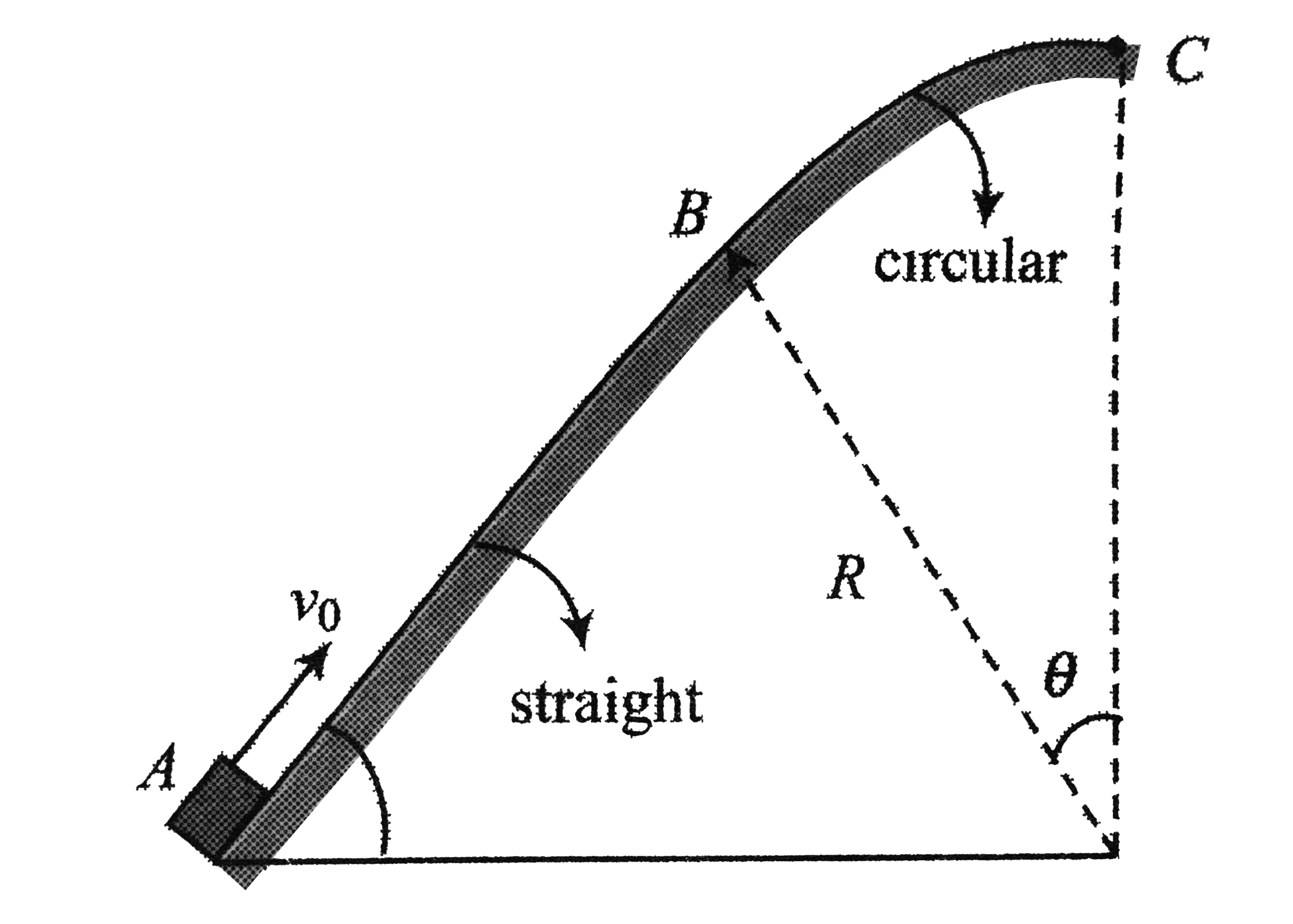 09:29View Solution
09:29View SolutionA spherical balll of mass `m` is the highest point in the space between two fixed , concentic sphere `A` and `B` the smaller the two sphere `A` has a radius `R` and the space between the two spheres has a width `d` . The bell has a disneter very dightly less then d . All surface are frictionless . The bell is a given a gentle push (owards the right in the figure ) The upward vertical is denoted by `theta` (shown ijn the figure)
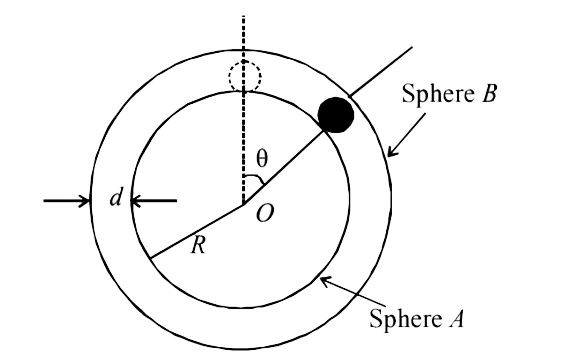
(a)Express the total normal reaction force exerted by the sphore on the as a finction of angle `theta`
(b) Let N_(A)` and N_(B)`denote in the magnitubes of the normal reaction force on the bell evered by the sphare `A` and `B` repectively Skech the variation of `N_(A) and`N_(B)` as functions of `cos theta ` in the range `0 le theta le pi ` by drawing two separate graph in your answer book taking `cos theta ` an the horizental axas.10:30View Solution
Solved Examples questions and complete solutions for chapter WORK, POWER & ENERGY of CENGAGE PHYSICS (ENGLISH) of Class 11
